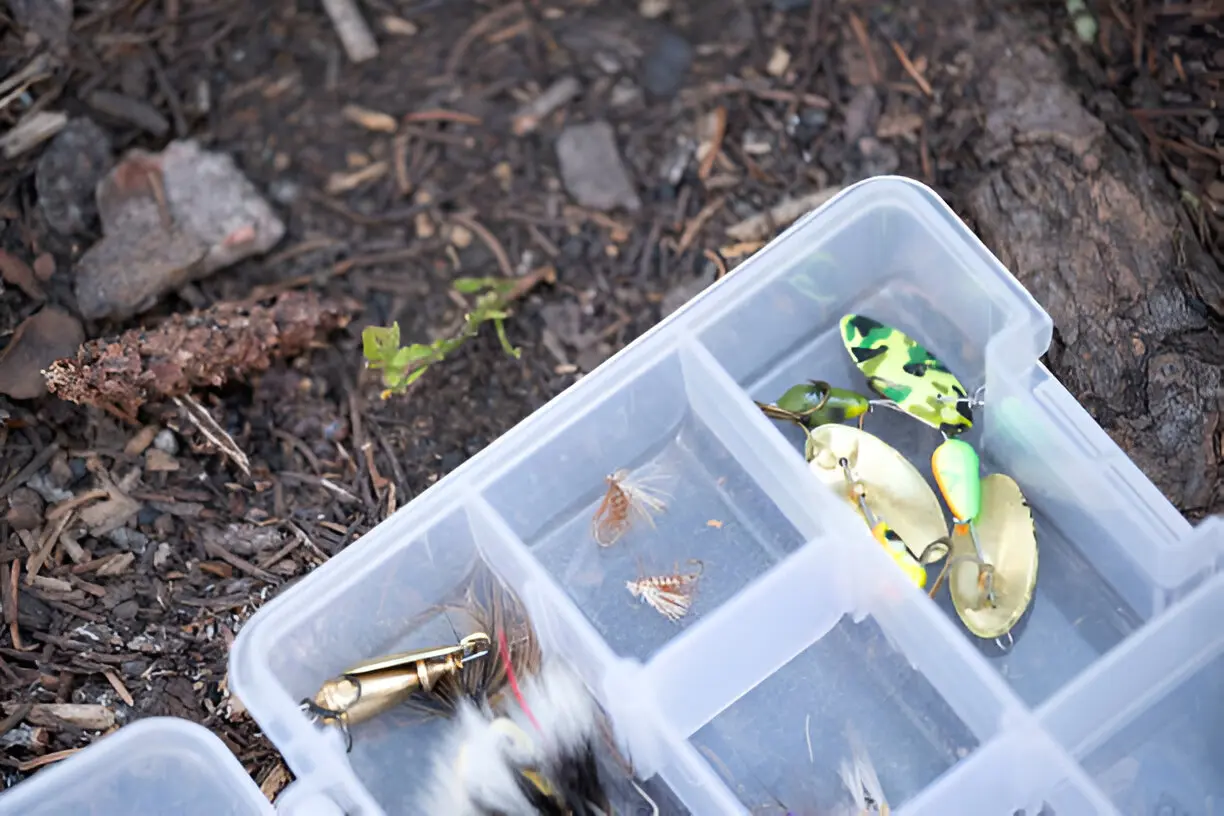The Complete Guide to Fishing Bait: Live, Artificial, and Fly
Learn how to choose the right bait for successful fishing. This guide covers live bait, artificial lures, and fly fishing, explaining when and how to use each for better results. Perfect for catching bass, trout, or redfish!
Live Bait: The Natural Choice
Live bait remains the most effective option for many fishing situations because it triggers the natural feeding instincts of fish. The movement, scent, and taste of live bait can entice even the most cautious fish to bite.
Types of Live Bait
Worms and Nightcrawlers
Earthworms are perhaps the most universal live bait. They work effectively for almost any freshwater species and some saltwater fish. Nightcrawlers, the larger cousin of earthworms, are particularly effective for bigger fish like bass, walleye, and catfish. Thread them onto your hook, leaving the ends free to wiggle naturally.
Minnows and Baitfish
Small fish like shiners, chubs, and fathead minnows are excellent for predatory fish such as pike, bass, and trout. Hook them through the lips or behind the dorsal fin to keep them alive and swimming naturally. In saltwater, sardines, anchovies, and pilchards serve similar purposes for species like striped bass and bluefish.
Insects and Larvae
Crickets, grasshoppers, and grubs appeal to panfish, trout, and bass. During certain seasons, these baits can be irresistible to fish. Mealworms and waxworms work well for ice fishing and smaller species.
Saltwater Live Bait
Shrimp, crabs, and squid are staples for saltwater fishing. Live shrimp are particularly effective for redfish, snook, and trout. Crabs work well for tarpon and permit, while squid attracts a wide variety of species.
Advantages of Live Bait
Live bait offers several key advantages:
- Natural appeal: Fish recognize live bait as food they naturally eat
- Scent trail: Live bait releases natural scents that attract fish from a distance
- Movement: Natural swimming or writhing motion triggers predatory instincts
- Versatility: Works in both freshwater and saltwater environments
Challenges with Live Bait
Despite its effectiveness, live bait presents some challenges:
- Maintenance: Requires proper storage and aeration to keep bait alive
- Availability: May be difficult to find or expensive in some areas
- Seasonal factors: Some live baits are only available during certain times of year
- Handling: Some anglers are uncomfortable handling live creatures
Live Bait Techniques
Still Fishing
This passive approach involves casting your live bait and waiting for fish to find it. Use minimal weight to allow natural movement, and be patient. This technique works particularly well for catfish, carp, and bottom-dwelling species.
Drift Fishing
Allow your live bait to drift naturally with the current. This technique is excellent for covering water and presenting bait naturally to fish. It works well in both rivers and when fishing from a drifting boat.
Bobber Fishing
Using a bobber or float keeps your live bait at a specific depth while allowing natural movement. This visual fishing method is perfect for beginners and effective for panfish, bass, and trout.
Artificial Lures: Engineered for Success
Artificial lures are designed to mimic the appearance and behavior of fish prey. They offer convenience, reusability, and the ability to fish actively while covering more water than live bait.
Types of Artificial Lures
Spinners and Spoons
These lures create flash and vibration as they move through the water. Spinners have a rotating blade that creates vibration and flash, while spoons wobble side to side. Both are excellent for trout, bass, pike, and salmon. Retrieve them at varying speeds to find what triggers strikes.
Crankbaits
Hard-bodied lures that dive to specific depths when retrieved. They come in floating, sinking, and suspending versions. Shallow-running crankbaits work well in less than 10 feet of water, while deep-diving versions can reach 20+ feet. These lures are excellent for bass, walleye, and pike.
Soft Plastics
Rubber worms, grubs, and creature baits offer lifelike action and feel. They can be rigged in numerous ways—Texas rig, Carolina rig, drop shot, or jig heads. Soft plastics are particularly effective for bass but work for many species.
Jigs
These weighted lures consist of a hook molded into a lead head, often dressed with skirts, trailers, or soft plastics. Jigs are versatile and effective for bottom fishing or vertical presentations. They work well for bass, walleye, and saltwater species.
Topwater Lures
Poppers, buzzbaits, and walking baits create surface disturbance that triggers explosive strikes. These lures are most effective during low-light conditions when fish are feeding actively near the surface.
Advantages of Artificial Lures
Artificial lures provide several benefits:
- Convenience: No need to keep bait alive or fresh
- Reusability: Can be used repeatedly unless lost or damaged
- Versatility: Can be worked at different speeds and depths
- Selective fishing: Can target specific species or sizes
- Active fishing: Allows you to cover more water efficiently
Lure Selection Strategy
Match the Hatch
Choose lures that resemble the primary food source in your fishing area. If fish are feeding on small baitfish, use minnow-imitating lures. If insects are hatching, try smaller lures that mimic bugs.
Color Selection
Bright colors work well in murky water or overcast conditions, while natural colors are better in clear water and bright conditions. Silver and white lures mimic baitfish, while chartreuse and orange can trigger reaction strikes.
Size Matters
Smaller lures typically catch more fish but smaller sizes. Larger lures attract bigger fish but may result in fewer bites. Match your lure size to your target species and local forage.
Retrieval Techniques
Steady Retrieve
A constant speed retrieve works well for spinners and some crankbaits. Vary the speed until you find what triggers strikes.
Stop and Go
Pause periodically during your retrieve to trigger strikes from following fish. This technique is particularly effective with crankbaits and soft plastics.
Jerking and Twitching
Impart erratic action to your lures to simulate wounded or fleeing prey. This technique works well with jerkbaits and topwater lures.
Match Your Technique to Conditions
Water Type
Still waters like lakes and ponds often require different approaches than moving water. In still water, you may need to create action with your retrieve, while in rivers, natural drift presentations are often more effective.
Weather Conditions
Overcast days often provide better fishing with surface lures and dry flies, while bright sunny days may require deeper presentations with nymphs or weighted lures.
Time of Day
Early morning and evening hours typically provide the best fishing opportunities. During these times, fish are more active and likely to feed near the surface.
Seasonal Considerations
Spring fishing often requires slower presentations as fish are less active in colder water, making it a great time to consider golden mahseer fishing trips. Summer fishing is best during low-light periods, offering incredible opportunities during this season. Fall fishing can be excellent as fish prepare for winter, and it’s also an ideal time to plan fishing trips for a rewarding experience.
Conclusion
Now that you have a better understanding of fly fishing basics, it’s time to get out on the water and put your skills to the test. Remember to always be aware of your surroundings and practice proper catch-and-release techniques to preserve the sport for future generations.
Also Read-TRT Supplements: The Natural Boost Your Body Has Been Waiting For







